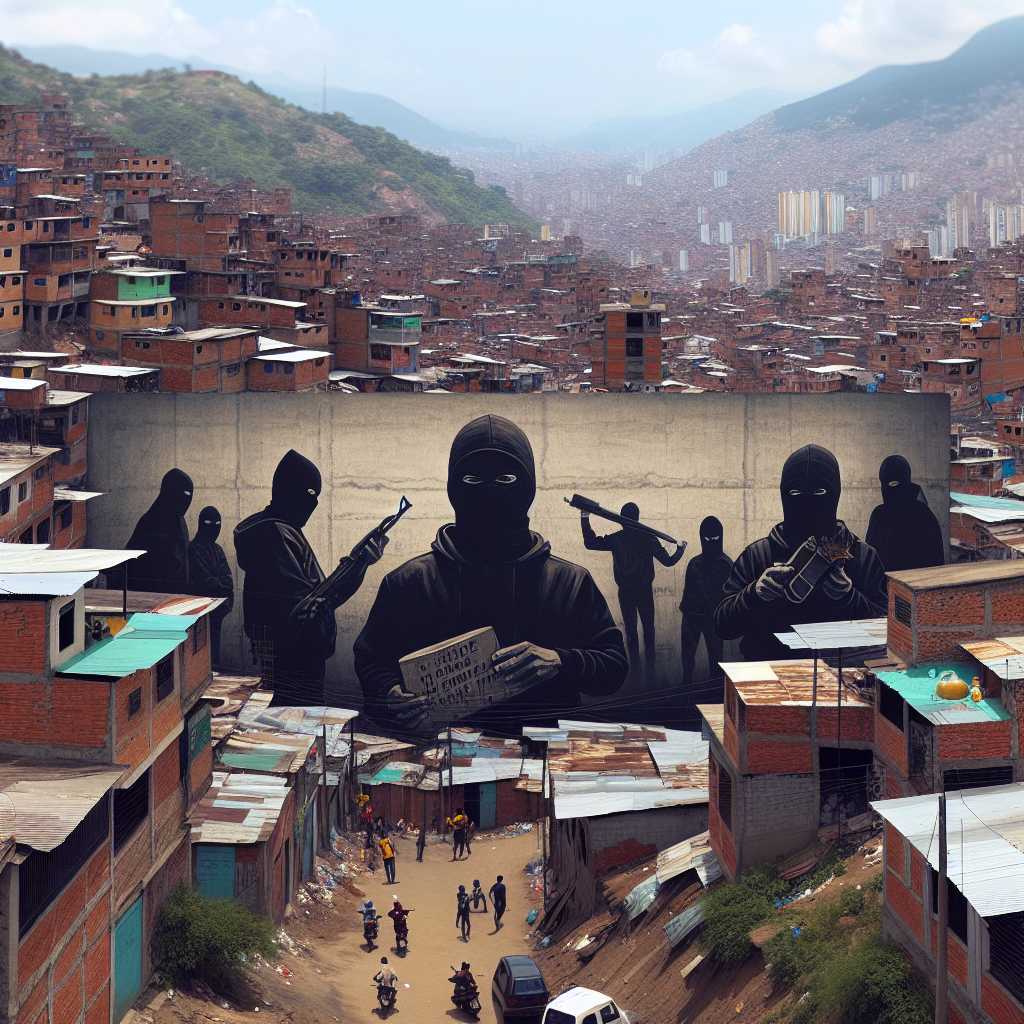The Rise and Influence of Venezuelan Gangs
In Venezuela, gangs have proliferated and gained substantial influence within the country, particularly as it endures economic turmoil and social instability. This article delves into the troubling escalation of gang activity in Venezuela, examining the root causes behind their expansion, their control over various regions, and the impact on Venezuelan society.
Historical Context and Socioeconomic Factors Behind Gang Emergence
The ascent of gangs in Venezuela can be partly attributed to decades-long social and economic disparities. Even with its vast oil reserves, Venezuela has struggled with economic management, suffering from hyperinflation, shortages of basic goods, massive unemployment rates, and poverty—which collectively have created a fertile ground for criminal organizations to flourish.
During the late 20th century, Venezuela witnessed substantial rural-to-urban migration, significantly straining cities’ infrastructures and amplifying urban violence. Formal employment opportunities remained scarce while impoverished neighborhoods grew, allowing gangs to establish themselves as alternative sources of income and authority.
Government Response and Corruption Challenges
The response from the Venezuelan government to cease gang proliferation has been marred by inconsistent policies and allegations of corruption within security forces. Efforts such as heavy-handed police crackdowns have often resulted in temporary suppression rather than long-term solutions. In some instances, corrupt elements within law enforcement have been implicated in gang collaboration for mutual benefits or protection fees.
Prison systems in the country also inadvertently aid in the organization and strengthening of gangs. Overcrowded and under-regulated facilities serve as recruitment and training grounds where criminals network and further entrench their power structures.
Territorial Dominance and Gang Culture
Venezuelan gangs have not only permeated street-level crime but have also asserted territorial control over disparate neighborhoods—collectively termed “Zonas de Paz” (peace zones)—where state presence is minimal. These ‘no-go zones’ effectively function under gang-imposed law rather than the national legal system.
These criminal organizations frequently engage in extortion, kidnapping, drug trafficking, and illicit resource extraction as means of revenue. Gang culture often glorifies a notion of sovereignty against state authority, propelling recruitment, especially among disillusioned youth seeking belonging or a livelihood.
The Human Cost – Violence and Migration
The increase in violent incidents connected to gang activity is a leading cause of internal and external displacement in Venezuela. With one of the highest homicide rates globally, Venezuelan society bears the brunt of unchecked violence. It is rampant against civilians caught in crossfire during territorial disputes between rival groups or targeted actions such as kidnappings or extortions.
In consequence, many Venezuelans have sought refuge abroad to escape the insecurity wrought by these gangs coupled with dire economic conditions. This mass exodus has generated regional migration crises, affecting neighboring countries’ social services and igniting discussions on broader immigration policies.
Government Initiatives and International Responses
The Venezuelan government’s attempts at curbing gang activity span various techniques, from negotiation and surrender incentives through “Operation Liberation and Protection of the People” (OLP) to increased militarization of law enforcement endeavors. However, policy successes seem fleeting as short-term strategies fail to address underlying issues prompting gang existence and appeal.
Internationally, countries affected by Venezuelan immigration waves have reacted with border controls, whilst others offer humanitarian aid. Dialogue through multinational organizations like the Organization of American States has yet yielded robust strategies facing this multifaceted problem that transcends crime into affecting geopolitical stability in Latin America.
Notes
Image Description
A panoramic view of a Venezuelan barrio (shantytown), with dilapidated buildings stretching across hillsides. Off in the distance at street level is a grainy image suggestive of a mural that glorifies gang culture – possibly depicting masked figures bearing weapons – indicating an area where a local gang might operate or exert influence.
